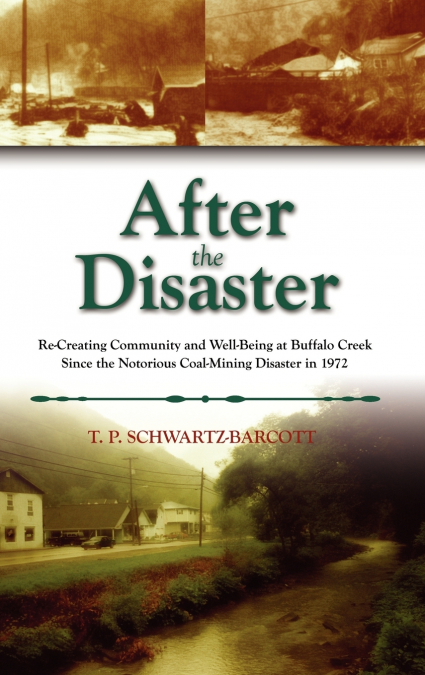
T. P. Schwartz-Barcott / Timothy Philip Schwartz-Barcott
Scholars who have studied rural people and places often have focused on a snapshotin time as they attempt to understand how human beings are impacted bychange at the local community level. Community once was declared dead as a unitof analysis for social science scholars, yet the citizens who live in these places findthat their attachments to place and to other people in these places are crucial totheir lives. Too often those who study such phenomena fail to examine the longtermimpacts of shocks to place and people. This methodological failing oftenleads to exaggerated estimations of the impacts of disasters on communities andtheir residents. Human beings and the social structures they create are resilient.In this book, the author fills some of the gaps in our knowledge when hereturns repeatedly to Buffalo Creek for several years, long after the flash flood departedin 1972. It is not often that a scholar with empathy for rural citizens returnsto a place for many years to understand the longer term implications of disastersfor individual well-being. This book provides a view of a place long after the tragedyhas taken place. It illustrates how community residents struggle to re-createcommunity and well-being after a serious ecological shock. The resilience of thehuman character and the adaptability of community structures form the core ofthis book.Taking us through the days before the flash flood atBuffalo Creek, the author paints a portrait of human failingsand of growing environmental danger. He draws onthe voices that were there on the scene. He also gives us adetailed review of newspaper accounts, government documents,and research studies, including Kai Erikson’s classicdisaster study, Everything in Its Path. From these manysources, we get a multi-faceted account of how the disasteroccurred and how dozens of local, state, and federal agenciesresponded to it.After the Disaster provides detailed discussions withlocal residents, survey data, and a gift for integration thatallows the reader to gain an understanding of how disastersimpact communities in the short term and in the long term.The latter is one of the most important contributions of thisbook.